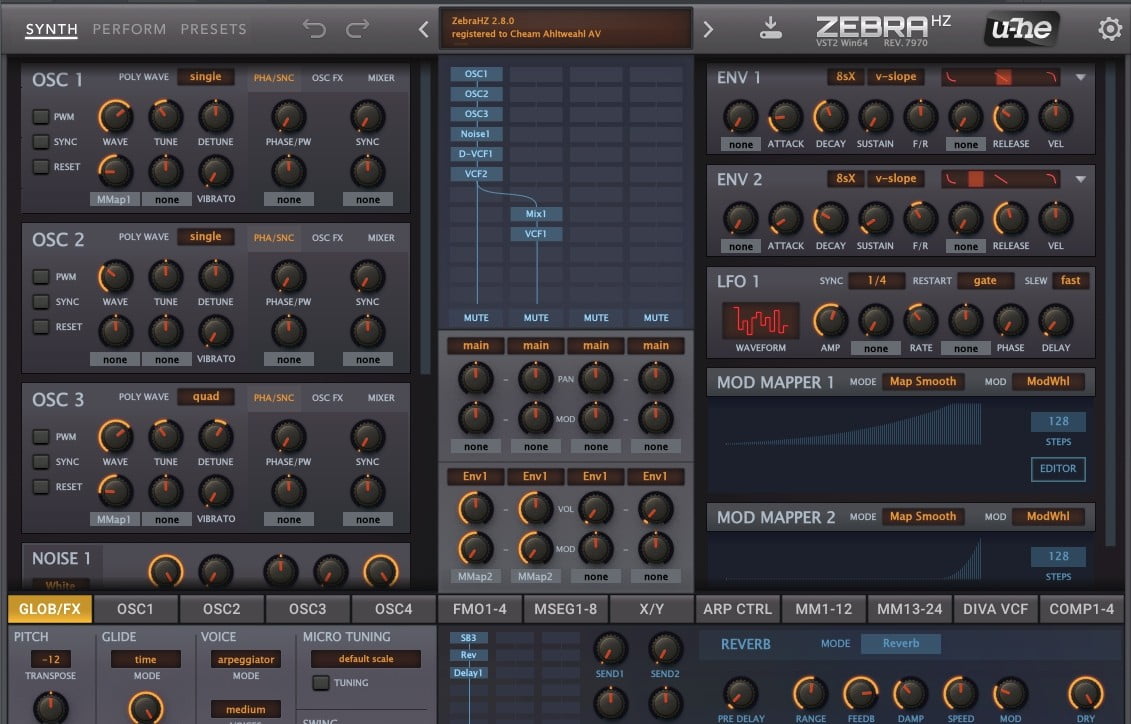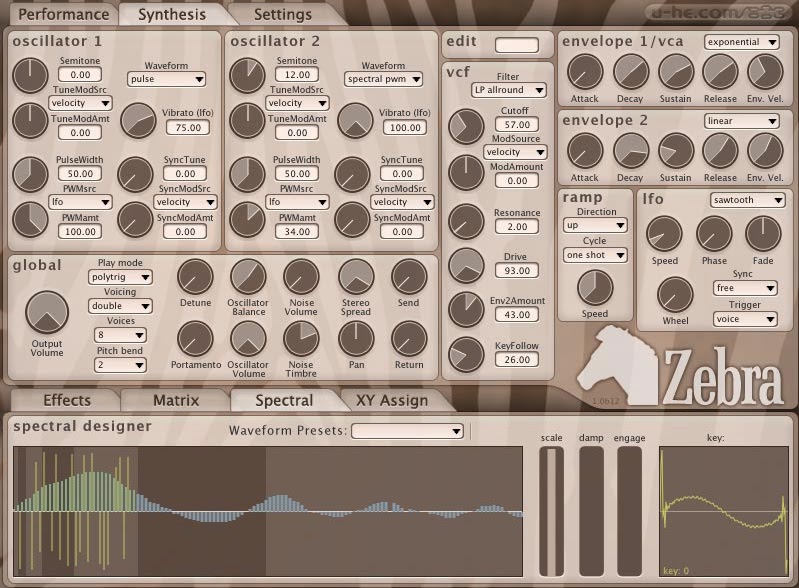
We figured out that it doesn’t really work as it’s supposed to. It probably wasn’t deliberate, but it was at least partly responsible for the characteristic sound.Īs for the oscillators, Prophets were renowned for their sync sound. But as soon as you modulate the cutoff, the modulation signal is imprinted on the audio. Once the cutoff is constant, it’s perfect. The Prophet 5 we modeled Repro on has faults in the filter.

Maybe four if you have a bipolar signal, you know? It’s crazy.Īnd it’s also got some great chipset faults. The Prophet 5 has this humongous modulation range – you can do audio-rate modulation over 12 octaves.
#U he diva or zebra pro
Sequential, who made the Prophet 5 and the Pro 1, didn’t give a flying fuck about parameter ranges. It’s made to play nice, it’s a sweet-spot synth. Diva is very smooth and mellow and it does what I call the precision of analog sound. Tell us a little bit about your Prophet emulator, Repro.
#U he diva or zebra software
For me it always comes down to this: Can people really tell the difference between software and hardware, or is it all in the mind? If you can see which is which the response is usually “yeah, this is obviously the software and that’s the hardware.” But in a blind test I believe you really couldn’t tell the difference these days. So you have to leave out the nonsense and concentrate on whatever is really important for the sound. But nobody wants their synths to accumulate faults that need repairing every year just to make them sound good again. Or are even counterproductive: For instance, if you really want the software to do exactly what the hardware does, it would have to break down. With analog emulations like Diva, Repro and MONARK – which was being built around the same time as Diva – everybody had a different idea about which details are most important, and which aren’t.
#U he diva or zebra full
The basic idea was to get as close as possible to the hardware but give it the full flexibility of software to keep the futurists happy. Mine was demonstrated by Diva, one of the earliest examples of that kind of technology.

Anyway, we each had different approaches. Back then it was something new, it was a cool concept that wasn’t abused like it tends to be these days. There was a discussion in the DSP forums with a few guys about the idea of zero delay feedback filters. How did you come up with the idea to create Diva? So my interest shifted towards analog emulations, and that’s where Diva and Repro came in. At the time I was like “Oh man, no, it’s all in your head!” But then I started buying analog synths when they came back into fashion, and realized how great they sounded. Zebra was my first attempt back in 2003, and everything just took off from there.Īround that time there was a heated online debate about the sound of plug-in synths versus analog hardware, and it bugged me that the smartasses turned out to be right – that analog stuff sounded different, better. With the arrival of VST it was clear that there was suddenly a way to do that, so I decided to quit my job and make my first serious plug-in. Basically, I was interested in designing my own synths. You have to understand that plug-ins were really expensive back then, especially the best ones. My studies focused on media: working with architects, with video, and then writing scripts for Macromedia Director – that kind of thing.Īfter my studies I started getting more serious about making plug-ins. The Internet had arrived, and I immediately got back into programming again. 10 years later I was studying industrial design. I eventually gave that up, but kept making music on computers. While everyone was playing games, I was programming them, creating sequences in software that were used in a couple of games. I got into programming computers at the age of 13 or 14 with the Commodore 64 and that kind of stuff. From u-he’s Berlin headquarters, Urs talked about getting into creating instruments, the science behind emulating analog in software, and trends in the ever-evolving field of sound design and instrument creation that he thinks are most exciting. Urs Heckmann is the founder of u-he, a company that began as a hobby, but has since grown into a renowned firm that has produced much-loved software instruments and effects, including Diva, Repro, and Satin.


 0 kommentar(er)
0 kommentar(er)
